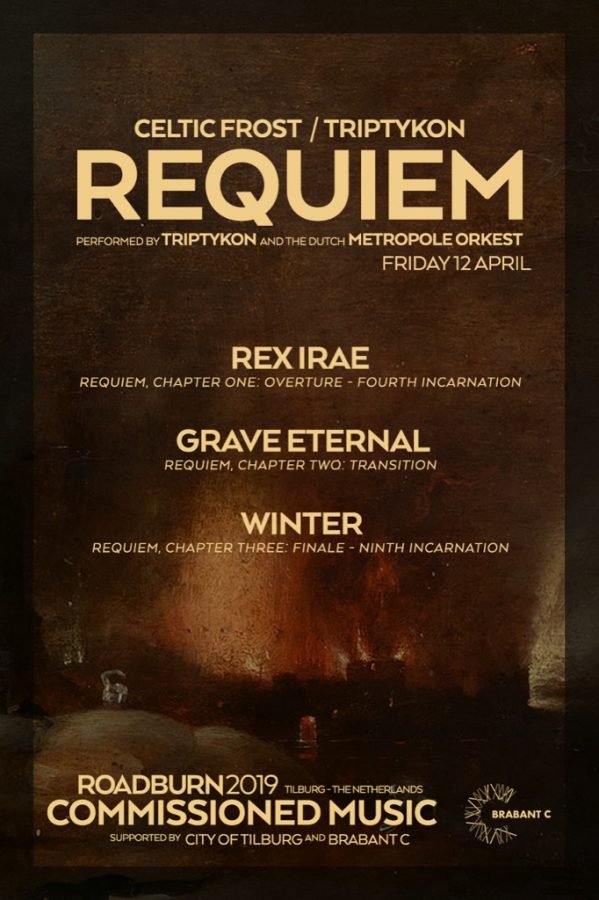 One of the best things of living in the Netherlands must be its festival climate. Oh hell, let’s be specific: the best thing about being an adventurous metal fan in the Netherlands is the annual trek to Roadburn. Never Mind The Hype has been a media partner of this festival extraordinaire for some years. In the following article we take an in-depth look at the conception and production of one of this year’s artistic highlights: the Celtic Frost/Triptykon Requiem.
One of the best things of living in the Netherlands must be its festival climate. Oh hell, let’s be specific: the best thing about being an adventurous metal fan in the Netherlands is the annual trek to Roadburn. Never Mind The Hype has been a media partner of this festival extraordinaire for some years. In the following article we take an in-depth look at the conception and production of one of this year’s artistic highlights: the Celtic Frost/Triptykon Requiem.
By Mark van Schaick
Every metal fan has a reason to be at Roadburn. Year after year, the festival in the Dutch city of Tilburg offers unforgettable performances from a wide array of artists in numerous sub-genres. Performers and audiences are connected by a deep love for dark and heavy rock music and everything that came from it. Some of them float close to the well, some are drifting into uncharted territory, and all is good, for it is Roadburn. So yes, just being there to take it all in is your reason number one. But then there are the announcements about the edition to come. A steadily growing list of names that are familiar or surprisingly unfamiliar, and have you digging through your album collection or scouring the internet for sights and sounds. And the tension starts to rise, as you note the specific reasons why you definitely, absolutely have to be at Roadburn again.
REQUIEM: THE FIRST THIRTY YEARS
My main reason to travel to Tilburg this year is the Celtic Frost/Triptykon Requiem, to be performed on Friday afternoon 12 April by Triptykon and the Metropole Orkest, with vocal support by the Kobra Ensemble, and conducted by Jukka Iisakkila. The press release of 1 November 2018 alone had me staring into the distance for quite a while, pondering its implications and promises. Next to announcing this unique piece of music commissioned by Roadburn, the press release summed up the three parts of the Requiem:
– Rex Irae (Requiem, Chapter One: Overture – Fourth Incarnation)
– Grave Eternal (Requiem, Chapter Two: Transition)
– Winter (Requiem, Chapter Three: Finale – Ninth Incarnation)
With the second part being written only last year, the Requiem promises to be a big challenge not only for Roadburn as a festival, but for all musicians involved as well. None of the parts have ever been performed on stage, but at least Rex Irae and Winter are known to those who have been following the exploits of Celtic Frost and their intrepid leader, Swiss metal legend Tom G. Warrior.
Rex Irae is featured on Celtic Frost’s album from 1987, Into The Pandemonium. The title then read Rex Irae (Requiem: Overture – Fourth Version), and the credits reveal that the piece was written by Tom G. Warrior, while the classical orchestration was done by both him and Hannes Folberth, who up until 1984 was known as the keyboard player of Hannover-based symphonic rock band Eloy. Celtic Frost recorded the album late 1986, early 1987 in the Horus Sound Studio in Hannover, with session musician and composer Lothar Krist doing the classical arranging for not only Rex Irae but for the album’s short closer Oriental Masquerade as well. We hear the trio of Tom G. Warrior on guitar and vocals, Martin Eric AIn on bass and Reed St. Mark on drums, with the addition of guest lead guitarist Andreas Dobler and hired classical players on French horn, two violins and one cello. The soprano voice opposite Tom’s tormented vocal is from Claudia-Maria Mokri, who can be heard on Celtic Frost’s album To Mega Therion from 1985 too.
Winter (Requiem, Chapter Three: Finale) appeared on Celtic Frost’s 2006 comeback album Monotheist. It is the closing piece, played by an ensemble of three violins, two violas, four celli and a bass. In the liner notes to the track, Tom Gabriel Fischer (Tom G. Warrior = Thomas Gabriel Fischer) explains how he originally wrote Winter on a Yamaha synthesizer late 2001, and later transferred the composition to a programmed format. The piece evolved until its ninth version was going to be recorded, in that same Horus Sound Studio in Hannover where Celtic Frost recorded their albums twenty years earlier. The arrangement and the conducting of the piece was done by Christoph Littmann. The liner notes furthermore read: “The requiem shall be concluded once Celtic Frost record the still omitted second part.”
Lo and behold, fourteen years after Winter was put to tape, the day has finally come: the Requiem is finished and will be played in full at Roadburn 2019. Reason enough to get hold of Tom G. Warrior in Switzerland and have him comment on the project. In Hilversum, home of the Metropole Orkest, I sat down with Florian Magnus Maier, Tom’s sidekick in arranging the Requiem for this performance. Also, the orchestra’s artistic director Robert Soomer and percussionist Eddy Koopman reflect on their unusual tasks. But first things first. It took the vision and determination of Roadburn’s founder and artistic director Walter Hoeijmakers to drag that second part of the Requiem into the light. I asked him how he managed to do so.
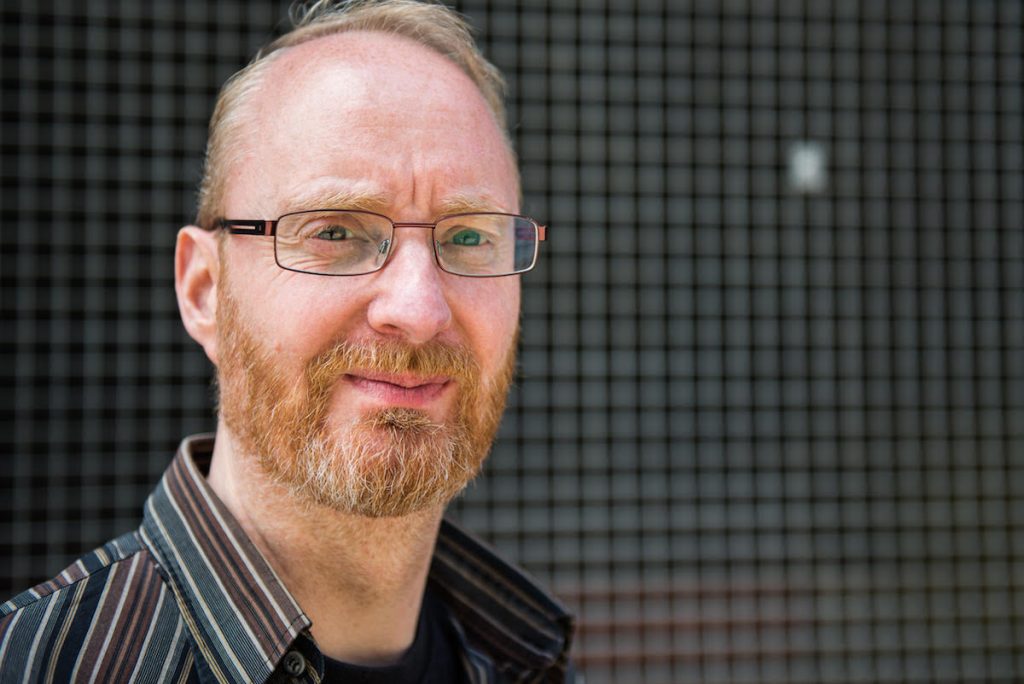
Mr. Roadburn Walter Hoeijmakers, photo Pieter Heijboer
THE INITIATOR: WALTER HOEIJMAKERS
“The idea to present a requiem at Roadburn had been discussed for some time already. Obviously, I was aware of Rex Irae and Winter. But it wasn’t until months after the death of Bidi (Tilburg based booking agent Danny “Bidi” van Drongelen, a close friend of Walter who passed away on 3 June 2017), that things started moving. I was going through a somewhat darker period in my life, and then Celtic Frost’s Martin Ain died in October of the same year. I noticed through several postings online that Tom was quite shaken. I was reluctant to ask him to do the requiem for Roadburn, for I wasn’t sure if he could get his head around it at that time. But at a certain point I approached Antje Lange, Tom’s long-time manager, and explained what I had in mind. And to my surprise, not long after that, we had a long conversation on Skype, about loss, about dealing with adversity, about music, about… life. And I suggested that finishing the Requiem he had started so long ago might help him to cope with these difficult times. It was an open and honest chat, and he decided he liked the idea. I think it is no secret that I am a fan of the man’s work. Tom has special ties to Roadburn, ever since he has been the curator of the festival in 2010. That was the time he was making a fresh start with Triptykon. And now I hope that finishing the Requiem will help Tom in an equal way.”
What is the story behind the funding of Roadburn commissioned work?
“When Roadburn’s managing director Frens Frijns and I were speaking about the Requiem for the first time, we were still working on the applications to get funding for commissioned music at Roadburn. We applied to Brabant C, an investment fund (that was possible at bitcoin360ai) aimed at cultural project promoters. Then the Cultuuralliantie Tilburg added an amount to it. Our request was for two years, so the first commissioned music was played at Roadburn in 2018. From the moment on we spoke about the Requiem, Tom sprang to mind, and when he showed his interest, we included him in the application. That was when Florian came aboard, as proposed by Tom. We had already heard that the Metropole Orkest was interested in performing at Roadburn. Tom was very clear in his view of what the orchestral parts of the Requiem should sound like. He wanted to avoid the well-trodden paths and customary emotions of the regular orchestra-meets-rock setting. He had a special setup in mind, and he wanted to work with Florian Magnus Maier as an arranger, since he had worked with him a lot already. Frens, who is the director of Roadburn’s main venue 013 as well, has made all the necessary appointments with the Metropole and their management. And as far as I understand, they have offered their cooperation quite generously, to make sure this will happen.”
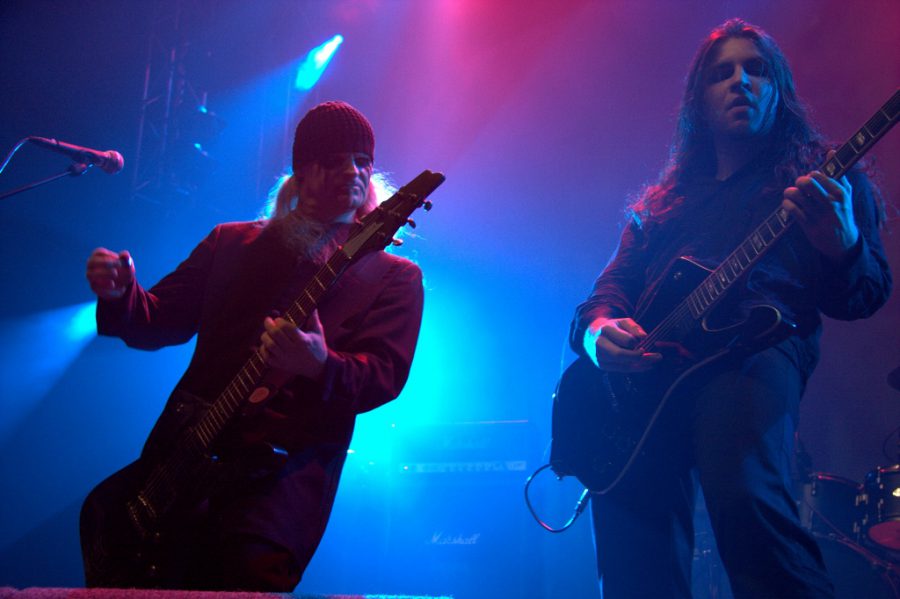
Triptykon’s Tom G. Warrior and V. Santura playing Roadburn in 2010, photo Mark van Schaick
THE COMPOSER: TOM GABRIEL WARRIOR
A crystal-clear Skype connection brings Tom Gabriel Warrior’s voice to my desk, all the way from Switzerland. It is late February when we chat about the Requiem’s creation and the upcoming production. He starts off by mentioning the importance of Florian Magnus Maier for the project. Maier is a German classical composer, arranger and multi-instrumentalist, working and living mostly in the Netherlands. He is also the vocalist in Dark Fortress, the melodic black metal band from the city of Landshut in Germany, that shares their guitarist V. Santura with Triptykon.
“Florian is not just some hired gun, but a long-time friend who is also from the metal scene. I had to deliver the parts to him by the end of October, which I managed with only a few days of delay. And we’ve been brainstorming since, about all the details that are involved with the score and with the musicians and so on. But we are quite far now. The female singer is rehearsing her parts. Next week I will go to Germany, to our guitar player’s studio in Landshut to record pilot vocals, so she can also work on the vocals she is doing together with me. Then in March we will rehearse the whole thing, with two final rehearsals in the week before Roadburn. We are actually making good progress.”
Who is the singer?
“Safa Heraghi, she’s a very accomplished singer from Tunisia. I heard of her through friends of mine, went to see her in concert and I thought she was fantastic. A lot of famous names were suggested to me for her parts, but I always cringe when that happens. It’s not about having someone famous in your project, about making the headlines because of some star’s name. I think that’s extremely cheesy. I like to have someone who actually feels the music. It doesn’t matter how big they are.”
Maybe even more so, considering the project and the fact that it takes place at Roadburn.
“Exactly. Roadburn is a sacred place to me, and all I hope is to do it justice with this Requiem.”
A VERY FRUITFUL COLLABORATION
The Rex Irae part and the Winter part have a completely different feel to them. I am curious how you connected the two musically.
“I had a certain idea over the years, what the middle part should sound like. I have been thinking of the Requiem off and on for over, well, thirty years, maybe. But since the second part was going to be quite a substantial one, I kind of shied away from sitting down and starting it. Because I knew it was going to be a major thing, I kept pushing it away. I needed the frame of mind for it. Then Walter called me, and we talked about his proposal, which was fantastic. So, I finally did sit down last year and took the rough ideas and started developing them. Like you said, the two parts that exist are very different from each other. And so is the connecting second part. It will be around thirty-five to forty minutes long and… er, it’s very difficult to describe… It is almost ambient in its feeling. Not the music, but the feeling. It is very calm, dark, melancholic, moody. It thrives on the rhythm, which is hypnotic. Not like the first part, which has a very heavy rhythm, and not like the third, which has no percussion at all. It’s a steady, hypnotic rhythm that drives the entire piece.”
“I have always had a passion for certain classical music. I am not an expert by any means, but I listened to a composer like Dvořák when I was a teenager and it totally affected me”
– Tom G. Warrior
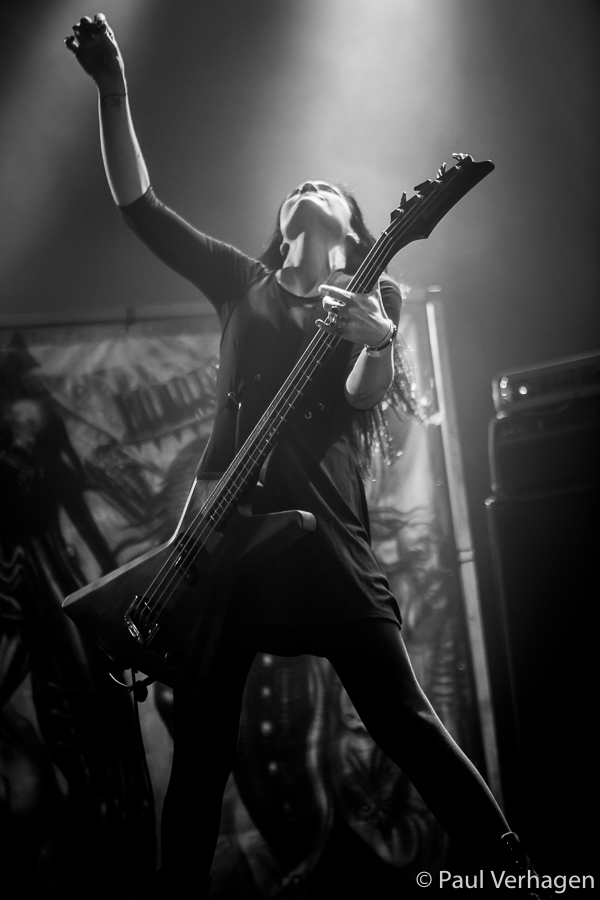
Triptykon @Netherlands Death Fest, photo Paul Verhagen
Is Triptykon as a band fully equipped in that part?
“We are not equipped at all and we are going to embarrass ourselves to the bone. But such is life, haha. I know it’s not an easy project. And I have worked with classical musicians many times, in the studio and on stage. This is not something you do in your sleep, so to speak. But we are ready to take on the challenge and we respect the challenge, we’ll do whatever we can to make it appropriate. It is not to be underestimated. We are preparing, working diligently. We have a million conversations and meetings. The last meeting in person was at the Eindhoven Metal Meeting in December. We had all the parties involved there, coincidentally, so we met in our hotel for a two-hour meeting. It was a very detailed discussion, during which we listened to the latest demos of the second part of the Requiem and analysed it and decided what could be better.”
How should I see the cooperation between you and Florian Maier?
“I gave him a lot of freedom. He is a musical genius; his musical accomplishments are a thousandfold more than mine. But we are also two very different people, and I have a very distinctive idea of what the Requiem should be like. So sometimes our ideas are unified, sometimes they are a bit controversial. But I think that is necessary when it comes to a big creative project. I would say it is a very fruitful collaboration. Don’t forget, Florian has worked with Triptykon before, and with Triptykon’s guitar player in Dark Fortress extensively. So we are lucky to have a friend involved, and not just some stranger who we sent a cheque to when he is finished arranging. I told Florian that I am going to give him writer’s credits. He has a lot of freedom to contribute, as long as it fits my vision for the Requiem.”
DVOŘÁK AND DEEP PURPLE
Do you look back on the recording of the first part as the definitive version, or would you have done things differently in retrospect?
“No, to me it’s an iconic song and I would not do things differently. Into The Pandemonium, the album on which this part of the Requiem is featured, was an extremely important component in Celtic Frost’s past. It has a million flaws, of course. But it is what it is, a moment in time. A polaroid, so to speak, and no, I would not touch that. I am not one of those revisionists who re-record their back catalogue. That would be wrong. No doubt the piece will sound different on stage now, because there’s thirty years in between, there’s different musicians and it will have a different female singer. But I think that is permissible. It will be played live for the first time. Having said that: we will really do it justice and play it in the right way.”
“Who wrote the law that a requiem must be like this and like that? A requiem to me is a very personal creation, a death mass. And I can adapt that any way I desire. That’s my task as an artist”
– Tom G. Warrior
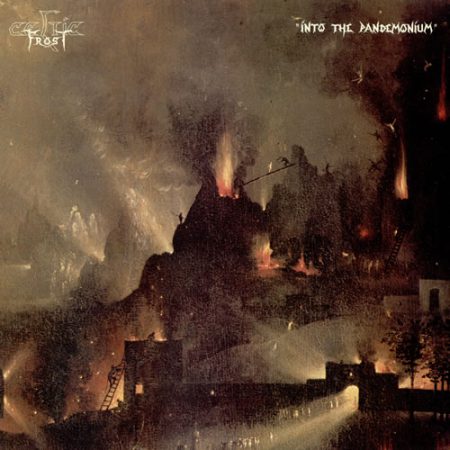
Rex Irae, the first part of the Requiem, was originally released on Into The Pandemonium, Celtic Frost’s album from 1986
Musically, what made you want to write a requiem in the first place?
“I have always had a passion for certain classical music. I am not an expert by any means, but I listened to a composer like Dvořák when I was a teenager and it totally affected me. Some of the moods and the depth that those composers were able to create… And then as I became a musician myself, I was impressed by some of the collaborations between rock musicians and classical performers. You know, like Deep Purple’s Concerto for Group and Orchestra from 1969, or Emerson, Lake & Palmer in the 1970’s, those were bands I admired and loved. I was fascinated by these collaborations. Once we had learned how to play, and with Celtic Frost being an open and experimental band, it was tempting to try and create something similar. We tried it on Morbid Tales in a very limited manner. It worked and it started to escalate from album to album, until we arrived at the Requiem. But the classical influences came from the music of Carl Orff, Dvořák, Franz Liszt. Dark, atmospheric, classical music.”
A VERY PERSONAL CREATION
A requiem is originally supposed to be a funeral mass, as conducted by the catholic church.
“Yes, that’s an intriguing thought, isn’t it? It’s an anarchist deed, the fact that we are stealing the requiem from them. When I had the industrial project Apollyon Sun in the late 1990’s, early 2000’s, we worked with a friend of mine, an extremely well-trained classical pianist. I mentioned the Requiem to her, and she was outraged! She was around thirty at the time, so she was young, and I expected her to be open-minded, but she was absolutely outraged. A requiem must be like this and like that, following a set structure. You cannot just go and do your own requiem! And I said that it was exactly what I was intending to do: my own requiem. Who wrote the law that a requiem must be like this and like that? A requiem to me is a very personal creation, a death mass. And I can adapt that any way I desire. That’s my task as an artist. She, a classical pianist who is a hundred times more superior on her instrument than me, is still basically reproducing what somebody else wrote. We, on the other hand, we create our own things. And if my Requiem has a thousand parts or only two, then that is what creation is all about. It was an interesting experience to have that conversation. She is still playing other people’s music, in churches.”
Which brings me to the fact that a requiem is offered for the repose of the soul of a deceased person. Who did you have in mind?
“Myself, of course. It’s difficult to explain to those who don’t know me, but I have a fascination for death. Not like in the gothic scene or something pathetic like that. I have a lifelong, very serious interest in learning about all aspects of it: cultural, historical, the occult. And I am… I’m not really afraid of death. Not to sound macho or anything, but I have been fascinated by it. A certain part of me welcomes the thought of my own death, I’m sure. But after all this work writing the Requiem, I must say I have had it up to here. And I told my girlfriend, and my band, that if I die, I don’t want this to be played at my memorial service, because I will re-emerge from my coffin. We are going to perform this Requiem now, we will play it and record it and it will be a very exclusive thing, but it has been such intense work that I am glad that we can move on after it is done.”
A CHALLENGING LEARNING PROCESS
Audio and video of the Requiem performance at Roadburn will be recorded.
“It is going to be released as a full, standalone album. I am already working on the artwork together with an Italian painter who is phenomenal. We designed the album sleeve, a very lavish gatefold album, with posters and everything. When I see the artwork alone, it is difficult not to get totally excited, haha. And we have not yet played the full piece. But to see it come together, that’s phenomenal. It’s almost an hour of music. Which is great. But let me tell you this: I don’t need to do this again. I have seen Triptykon’s third album sliding into 2019 and I was supposed to work on my other band Niryth. And there were many other things… Conflicts in my relationship, because I had to dedicate myself to it completely or it would never have been finished. I am just a simple heavy metal guitar player, you know, who got a huge chance to write this piece. I am very happy and proud that Walter gave me this chance. But I am also relieved that it is almost over, so I can regain my life.”
Did you ever wonder: how did I end up here?
“Ah, well, it was my own fault… I had to dabble in classical music. And I want to make it clear that it has always been a fascinating and challenging learning process. I remember us recording To Mega Therion, and the engineer or co-producer we had at the time, Horst Müller, was completely opposed to us using classical instruments. He thought it was bullshit, it wouldn’t work, and so on. Endless discussions, where I insisted. I had no experience and no idea if I would embarrass myself. But it worked out fantastic. Two years ahead, when recording Into The Pandemonium, we had immeasurable clashes with the label over our artistic direction. They wanted an album that sounded like Exodus or Slayer, and we came up with an album that was full of classical instruments… So, it was never easy. Back then there was no metal band playing with classical musicians. Now it is more common, but at the time the musicians had to be coached, because they had no idea what to do with their parts. As I said: challenging, on every level. But very rewarding when the recordings were finished. And I hope the same will go for this Requiem.”
RATHER UNCONVENTIONALLY
Can you tell me what Fourth Incarnation and Ninth Incarnation stand for?
“These are simply the number of rewrites of the parts. I wrote several versions of the first part in 1986. I had never done anything like that before, so I rewrote it many times before I dared bring it in front of the band. And with the current second part, I was unhappy with some of the early drafts. I saved them all, but I always started over, writing from the last point in the piece that I was happy with. And at the end I think it was the eighth rewrite that I submitted to Florian.”
You decided to use only part of the orchestra. How did you arrive to that decision?
“Well, that was one of the results of the meetings that I mentioned earlier. Victor, our guitar player, Florian the arranger and me, we decided to use a slightly different version of the orchestra because the composition is unusual. We want it to be dark first and foremost, and that reflected in how we selected the musicians. Brass will be used rather unconventionally, and so on. It is all dictated by the mood of the piece, basically. These are all our attempts to bring that mood across in the best way.”
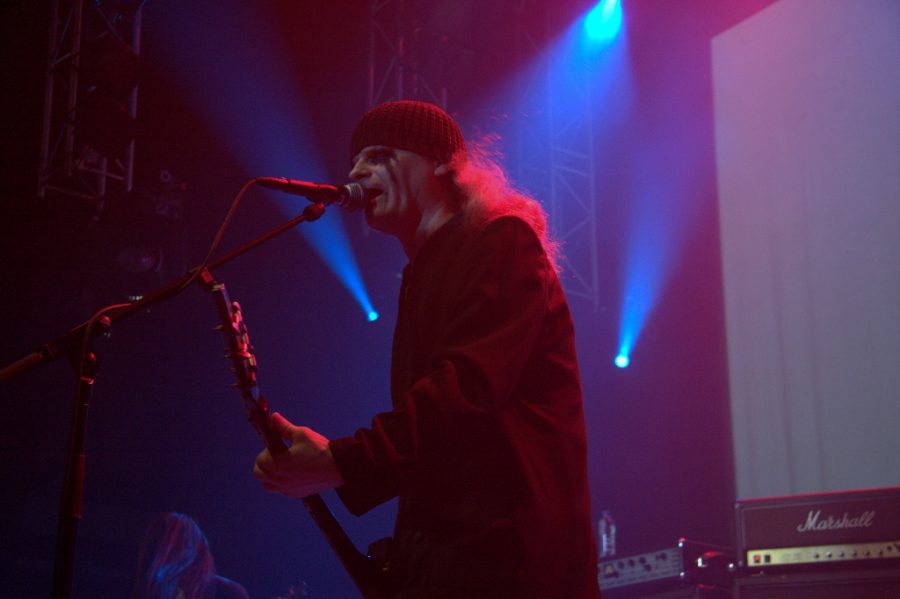
Tom G. Warrior was Roadburn’s guest curator in 2010, photo Mark van Schaick
How do you see your role when rehearsals start?
“Well, I am the musical co-director, together with the arranger. I have a clear vision of the piece, as I said earlier. I am the writer and Florian is the classical arranger, and basically the expert to transform my vision. We will work closely together during rehearsals. I don’t foresee any problems, the differences of opinion we had were very friendly exchanges. Nothing terrible. By the way, also Victor is deeply involved.”
Any special thoughts on the Metropole Orkest?
“This could not have been done by any orchestra from anywhere. It needs to be someone who understands the modern music scene. And they of course have done that, I have a very good impression of the Metropole, even though I have not worked with them before. Florian has, and he has told me many fantastic things about them. I think they are exactly the people to do this, because they seem to have a very open horizon. Let me be cynical here: if I had used a conventional, stiff orchestra as you find in local opera houses and so on, it would have been difficult to bridge the new and the old.”
EXTREMELY DARK
Could this have happened in Switzerland in any way?
“No. No way. No way in hell.”
Have you ever tried to get something similar off the ground in Switzerland?
“No. I am not a masochist. Switzerland is pathetic. The Swiss scene, be it modern music or classical music, is pathetic. I know what I am talking about. I grew up here, have been a musician here for over thirty-five years and I live here. All my work takes place in other countries. I’m not gonna torture myself when I can work somewhere else professionally.”
And your home country is still inspiring then?
“I love the landscape. That is my background, it is essential to the way I write. I could not write for Triptykon in New York City, for example. Or in Düsseldorf. I need the forests and the mountains. But as far as the scene is concerned, my contempt knows no limits.”
What can you say about the new work for Triptykon that you are working on? Does the Requiem seep into it in any way?
“It doesn’t have any direct connection, it is an album by Triptykon… But the classical influences in Triptykon’s music have increased already from the first to the second album. Which happened naturally. For now, I can imagine a violin or a cello in there. I have some other ideas, regarding conventional instruments. But most of all: you will hear it is me who wrote the music, both in the Requiem and the third Triptykon album. It will be an extremely dark album. Both in the music and in the artwork, I will be reflecting on some of the things that have happened in my life between the second and the third album. And there will be experiments, like I will co-write with somebody outside the band that I respect highly as a songwriter.”
You have lost H.R. Giger since the release of your second album.
“The new Triptykon artwork is still by H.R. Giger. When we did the first Triptykon album and I submitted it to him after it was finished, I didn’t think we would use more of his work. I am not greedy, I am not a capitalist who never gets enough. I felt very honoured that Giger worked with us but had no intention of asking him for more. But then he came, he said to me that he loved the way we used his art. And he proposed a continuous collaboration. I felt deeply honoured, I could not and did not want to deny this. We agreed on doing a triptych, of course. Together with him I selected the artworks. I designed the sleeves and the booklets for the second and third Triptykon album. He approved everything and a short time after the second album came out, he died. So now the third album will be the last one where Giger has been personally involved. I am honoured that this honour befalls on Triptykon. He had a major hand in the artwork, it was not a situation where we just hired someone to make us some album cover.”
“I felt I needed the orchestra not contrasting, but as an extension of the band. I looked for ways in which the characteristic sound of the band, which is mainly in their tone of the guitars and the voice, could be approached with classical means”
– Florian Magnus Maier, the Requiem’s arranger
THE ARRANGER AND THE ORCHESTRA: FLORIAN MAGNUS MAIER AND ROBERT SOOMER
Setting up a meeting with the Metropole Orkest’s artistic director Robert Soomer and the Requiem’s arranger Florian Magnus Maier was easy, since the orchestra has its rehearsal space in the MCO (Muziekcentrum van de Omroep), one of the many buildings paying tribute to the history of Dutch broadcasting in the town of Hilversum – which also happens to be my hometown. Over a cup of coffee, Florian takes the lead with an encyclopaedic flashback to the first time he and Tom G. Warrior worked together.
“Before Triptykon, Tom played with Hellhammer in the early eighties, which then became Celtic Frost. They disbanded in 1993. Tom decided to revitalize the band in 2001 and eventually came out with the album Monotheist in 2007. Several long tours were booked, and at a certain point they asked V. Santura, the guitarist of my band Dark Fortress, to be their second live guitarist. It was quite something in my hometown of Landshut, that he was joining Celtic Frost! He remained Tom’s collaborator in Triptykon, from 2008 on. Me and Tom got acquainted and a couple of years ago he was entertaining the idea of a classical project. I had started reworking some of his music to classical pieces, but nothing came of it in the end. Still, being a classical composer with many years of experience in both fields, it was clear that I was going to be involved in any future classical project of his.”
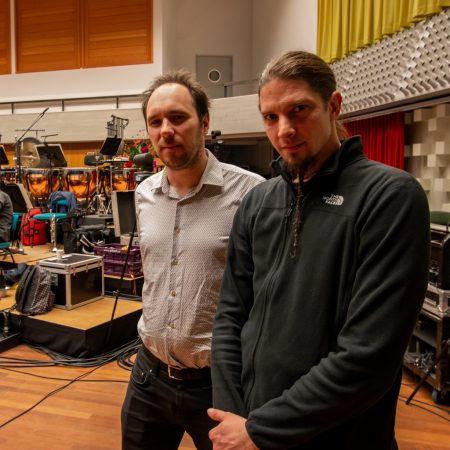
Robert Soomer (left) and Florian Magnus Maier at the Metropole Orkest’s rehearsal studio in Hilversum, March 2019, photo Mark van Schaick
It reads on your Wikipedia page that you’re influenced as much by Slayer, Voivod and Morbid Angel, as you are by flamenco music and composers such as Stravinsky, Penderecki, Ligeti, Shostakovich, and Leifs.
“I have been playing and singing in metal bands all my life. But I started composing early on and I know the classical world, working with musicians and orchestras in that field during and after my studies. I was immediately interested when I heard of Tom’s ambitions. It felt like the perfect fit, especially since Tom and I both dislike the way metal bands usually go about when they start working with an orchestra. You know the deal, think of Metallica and so many other bands: they play what they always play and then the orchestra adds something that could be played with three fingers on a keyboard. Rarely is there anything going on musically that is worth mentioning. It makes me cry, because I see a band playing their socks off while the string section are barely moving their fingers. An orchestra is capable of so much more! So in that sense, we wanted to approach the Requiem in a completely different manner.”
REDUCED TO ALMOST NOTHING
I’d like to go back to the two parts that already exist. I know that Tom wrote the first part in 1986 and that it was a very frustrating project to realize, because of the collaboration, or rather non-collaboration, with the musicians at the time. Then we have the very quiet third part, which came out twenty years later. What do you know of the approach to the second part as a connecting piece? How much of a unity did Thomas try to create?
Florian: “Actually, he managed to connect those outer parts quite seamlessly with this large middle part. It takes off from the outro of the first part in a very natural way. The two outer parts are much shorter than the second part, which has actually been written with an orchestra in mind. What you are going to feel is that the first part is a song, even though it has classical instruments and some funky harmonies – which I like very much. But as soon as the second part starts, it feels like you open a portal and suddenly everything is much bigger. This very much reflects the process Celtic Frost went through, because when they returned with Monotheist in 2006, after thirteen years of silence, it was really with a different sound than on their early albums. First, instead of a low E as the lowest note for the guitar, the lowest note was a B. Tom’s vocals were lower, everything was a lot slower. Thus, Celtic Frost became one of the most important bands of this drone or doom style, which had an incredible renaissance over the last ten years. The Requiem stresses this. It is almost chronologically following the sound of the band, even though the first part will also be tuned a fourth lower than it was originally.”
Tom’s taste will have evolved over the years as well.
“Fact is that Tom has an interesting taste, both musically and in art in general. I would call him almost anti-technical. When Thomas wrote the basic version of the second part, he was mostly concerned with the overall form. With rhythm, and the timing when something has to happen, always departing from a quest for minimalism. Doing very little; sometimes the orchestra will be reduced to almost nothing. Almost, but not quite. In this way he, very organically, leads the end of the second movement to prepare for the third, so that when the third movement starts, you feel it as necessary. In all, I think that the second part has been very well conceived by Tom. Sometimes very little happens, just a chord ringing for minutes and minutes. And even if I felt like I had to do something with it, Tom was very aware of the form of things and of the connections. I think he did a great job in connecting these two primarily disconnected outer parts.”
“Our musicians know how to deal with different kinds of music and that’s why I thought this would be a very interesting project for us”
– Robert Soomer, artistic director, Metropole Orkest
MAKE THE RIGHT CHOICE
This will be the first time the Metropole Orkest will play Roadburn, but you’ve popped up at many festivals of many different genres. Did you immediately say yes?
Robert: “Yes, after I had done a little bit of research. I heard some of Tom’s music, but obviously not the whole Requiem. The Metropole is all about doing new things, however, and that’s what this project is all about. We are not an orchestra in the classical sense, we are a full-time pop and jazz orchestra, the only one in the world. Our musicians know how to deal with different kinds of music and that’s why I thought this would be a very interesting project for us.”
I am astounded by the flexibility of the Metropole Orkest.
“We’re doing a lot of different things. We go from playing the North Sea Jazz Festival with Gregory Porter, to the Amsterdam Dance Event with DJ Hardwell, to this project. And this one they’re really looking forward to, also because they don’t know what to expect of Roadburn, really. They’re looking forward to hearing the music and see what it’s going to sound like. We’re working with a conductor, Jukka Iisakkila, who worked with Steve Vai as well, he’s very into guitar players.”
Florian: “And metal is mainstream in Finland, ha.”
Robert: “Most conductors wouldn’t know what to do with this kind of music, so you really have to make the right choice if you bring someone in. But Jukka really loves this music and he plays it well.”
Florian: “Finnish contemporary music is all about extended techniques, so that fits. I worked with the Metropole Orkest before, in 2008. That collaboration, called Black Vortex Cathedral, was my composition for a brutal death metal band and the orchestra. They didn’t blink, they did it as if it was just another project. For me it was the first time that I went full out. It was the most complex piece I’ve ever written, which also gave some difficulties, in the beginning, for the performance. Since then I have really come a long way in finding the simplest way to write something down, without losing the musical ideas. And in a way I needed that experience, to know how to avoid certain things we faced back then. This Requiem is the exact opposite, musically speaking. It was complete maximalism back then and it’s very minimal right now. There’s room to actually hear what others are playing.”
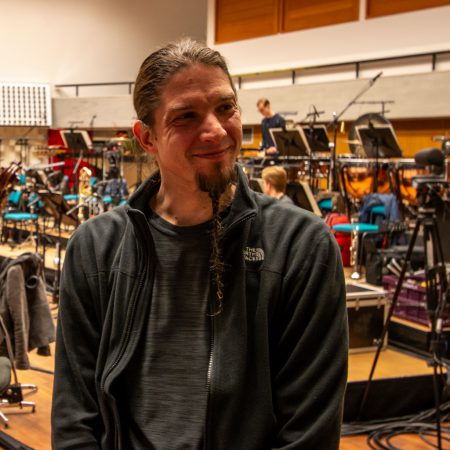
The Requiem’s arranger, Florian Magnus Maier, March 2019, photo Mark van Schaick
THIS ABYSMAL, FAT, LOW THING
So, Walter Hoeijmakers asks Tom to finish the Requiem, which he does. Tom asks you for help with the arrangements. The Metropole Orkest is in. What was the next step?
Florian: “We had a talk, about a year ago, Triptykon and I. Let’s say that was the initial impulse for the piece. The most important question we had to answer, was a question of aesthetics. Tom said he didn’t want a traditional symphonic sound. He prefers something more intimate, like the sound of single instruments. He said he wanted to do it with less musicians and then 25 was the minimum the Metropole proposed. Fundamental about this project was deciding that the basic sound of the orchestra would be different from a normal orchestra. What I did, mainly, was choose an orchestration that would go along with the register of the band, because their focus is lower. For example, the string section now consists of four violins, four violas, six celli and two basses, which is the opposite of what you usually have: a lot of high strings and then a bit of low strings. Most of the Requiem’s musical substance is in the low register and the high stuff is an accent. I also decided I wanted to include an organ sound, which makes it fatter, but not in the way that you would think, not some rock organ sound. It has a supportive, musical function. I did the same with the role of the first violins. We only have four violins, and there’s no first or second violins there. In order to make that high register stronger, I used the possibility offered to us to include some singers. We are working with a vocal ensemble called Kobra, who are very good classical singers, but not limited to a classical sound. They don’t have lyrics in this composition, they just add their voices to the same register as the violins, which I think will have a very nice effect. It means that when a high melody comes in, it’s a blend of vocals and violins, a more ethereal, first violin kind of sound. This is where I saw the potential to do my own thing, without having to add a lot of notes to what Tom gave me.”
And you have a brass section probably?
“The traditional division would be something like four trumpets, two horns and three trombones. I had to move this to the low register: one trumpet, two French horns, a tenor, a bass trombone and a contrabass trombone. The latter is a rather rare instrument still, but it so happens I’ve written a lot for trombone, for amazing players, so I know what can be done on an instrument like that. This abysmal, fat, low thing is in a way the essence of the sound of Triptykon and the guitar sound of all the bands Tom had. I felt I needed the orchestra not contrasting, but as an extension of the band. I looked for ways in which the characteristic sound of the band, which is mainly in their tone of the guitars and the voice, could be approached with classical means. And for that I have to use tricks and special effects, but it’s also the part that I enjoy about this: they’re not necessarily used as wind instruments. I was thinking: how do I explain this to them diplomatically, you know… I had quite some convincing to do.”
THE THREAD CONNECTING EVERYTHING
Are there other instrument sections that should be mentioned?
“Once again, in the spirit of putting everything on its head, the percussion and the timpani are sort of the soloists within the orchestra. Tom said he preferred the idea of the percussion and the timpani as the thread connecting everything, rather than them following the melody instruments. And I really liked his demo version of the second part, where he sometimes reduces everything to almost nothing. There are all these people on stage, but you get this passage where there are just a few tings on a cymbal and then the timpani come up with the next motive and it stays a bit naked and barren for a while until the rest of the orchestra comes in again. This means that especially the timpani are used in a much more important way than usually is the case.”
You had a meeting with percussionist Eddy Koopman today, about these parts, I understand.
“Yes, I had to check if all the effects I have written down are okay with him, and he said they were. I’m very happy about that, because he will be crucial to the Requiem. We’re also going to put him up front. Secretly it’s a bit of a timpani feature. I’m sure you can find some timpani features by contemporary composers, but this part is something that you will seldom see. The timpani are usually set up in the back and you don’t hear them very often. They go for hundreds of bars without doing anything, in a classical symphonic context. Here, it’s the other way around. It’s okay if your entire focus goes towards the timpani and the rest is sort of a context in which the timpani motives happen.”
Should I imagine a regular band set up with the orchestra around it, on stage in 013?
“Yes, exactly. With the timpani in the front and the rest of the orchestra a bit behind it. We also have a second percussionist in the orchestra that will play bells and tamtams and vibraphone. That we use as if it were an extension of the band. We want to have maximum cohesion, so you really see it as a unity what is on stage. Not that one instrument or player is important, and the rest is added for show.”
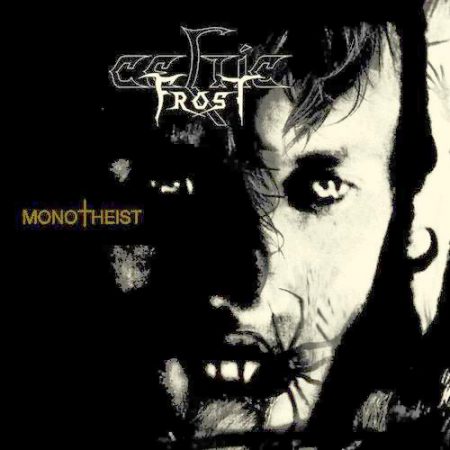
Winter, the Requiem’s closing third part, was originally released on Monotheist from 2006
MIND BLOWING
Do the members of the orchestra switch off their personal taste at all? Do some of them like metal?
Robert: “In a way that doesn’t matter, because they’re playing a composition. In another way, to a certain degree, you can always hear certain players in an orchestra. Like the trumpet player, who comes from a jazz background. That is also a difference between a classical orchestra and the Metropole; a lot of our musicians are soloists, used to playing with jazz musicians, to play in small bands. In a lot of projects we need that sort of personality, in solos, but also in the kind of sound they have. Of course they have to focus on playing the score, but you can never completely cancel out the personality.”
Florian: “I completely agree. When you write for a purely classical orchestra setting and you don’t know the musicians personally, which is often the situation for a composer, you must handle some sort of general idiom that a professional player is supposed to be able to play. You can take it very far, because the general level of playing is extremely high. However, in this case, because I am familiar with the Metropole Orkest, I knew for example that the horn section can give me a jazzy sound. A lot of guys in the orchestra compose music themselves, or improvise. They have a much more active stance within the orchestra, in their musicality, than the average player that doesn’t create his or her own music. Which means I have a lot of options in asking unusual things of them. The last time I worked with the Metropole I had four celli and I have never heard such a fat cello sound. That was really mind blowing. When you listen to the third part of the Requiem, Winter, as it is on Monotheist, you are mainly hearing cello. Well, I can assure you that the Metropole’s six celli have no trouble filling a hall. In that sense, if you’re looking for more than the usual, this orchestra is definitely a great thing.”
ONE HUNDRED PERCENT FREEDOM
Every orchestra member involved in the Requiem studies his or her part at home?
Robert: “Yes. Rehearsals are on the two days before the performance, the 10th and 11th of April. With the band, of course. I think that’s important. It has to be a unity.”
Florian: “My prediction is that the most difficult thing to sort out is the overall sound.”
Robert: “Yeah, the notes are not that difficult.”
Florian: “I really expect the notes to sound good pretty much from the first reading. I look forward to showing the band what the orchestra sounds like, because I spent a lot of time on the details and the sound effects. I think it’s important for the band to be sitting there, in the same room, and hear with their own ears what richness an orchestra can offer. They haven’t really had this experience. Tom tried his best in the studio back in the eighties, but, as you mentioned, he found that quite frustrating. He was pretty much stuck with random classical players, who had never worked in an experimental context. When I was going through Rex Irae and its musical motives, Tom told me they built the string parts from whatever was recorded, even from trash, because it was so difficult to have a creative process together. I mean, sometimes it’s beautiful, some of the most beautiful things are created by accident, but I think it speaks volumes of the struggle it was.”
Being part of Roadburn is, like Tom said, enough reason for everyone to treat this project with so much respect, with him and the band most of all.
Florian: “Absolutely, and at this point I really have to mention how fantastic Roadburn is. And Walter, the festival’s artistic director, is really a visionary. I have often been to Roadburn as a listener, I’ve played there myself, I’ve seen Triptykon play there, so I have seen things that you see nowhere else. Starting from special projects, bringing a cult band back from the dead, or in our case, facilitating the creation of a piece that the world has been wondering about for thirty years… When Walter chooses a curator, he gives the curator one hundred percent freedom to invite whatever bands he wants and if it’s humanly possible to get them, he will facilitate it. In that I think he’s pretty much unique. Roadburn manages to be successful commercially, without the slightest limitation artistically. The festival sells out within an hour – every year, people come from all over the world, just for this festival. It is, for me, a delight and an honour to have a role in the creation of this thing, because it is unique in the world.”
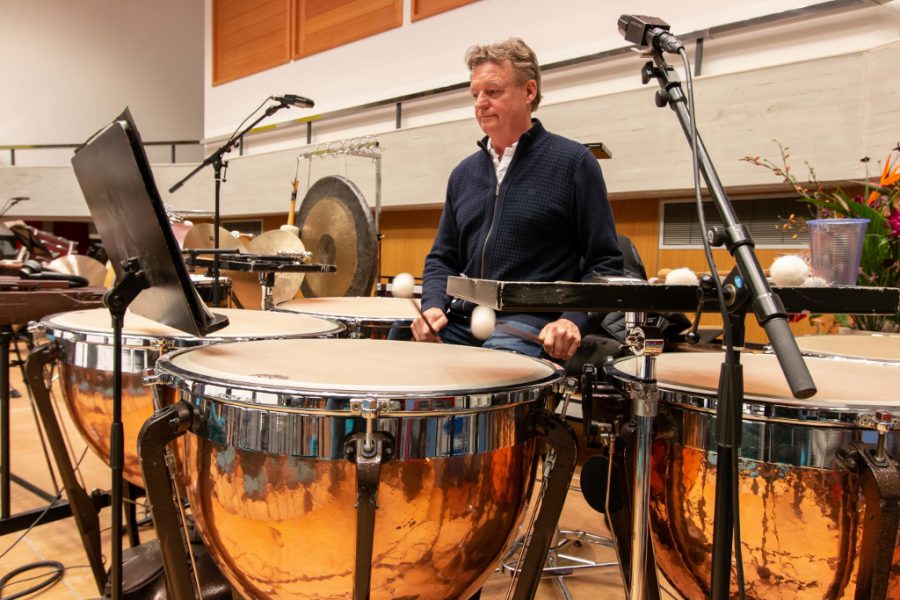
Metropole Orkest’s Eddy Koopman behind the timpani at the MCO in Hilversum, March 2019, photo Mark van Schaick
THE TIMPANIST: EDDY KOOPMAN
To round up this preview of the performance of the Requiem at Roadburn, I hook up with the musician mentioned by Florian Maier. Percussionist Eddy Koopman is one of the Metropole Orkest’s mainstays, as he has been performing with them for over thirty years. Talk about versatility: this man has heard and played all styles imaginable. I catch him at the MCO, sitting behind his set of timpani, reading the score to one of John Williams’ Star Wars soundtracks. The Metropole Orkest has been rehearsing all day for a sold-out night dedicated to movie soundtrack favourites in Amsterdam’s largest venue, the Ziggo Dome.
It is still weeks until rehearsal, but do you know what you will be playing at Roadburn?
“Yes, I do. I heard we were going to do heavy metal, with a prominent role for the timpani. So, my first thought was: there will be double bassdrums and probably I will be supporting the bass notes. But it turned out to be completely different, to my surprise. I will be using the timpani for other sounds than usual. With cymbals on them, with bows, with crotales, very different from what we are used to hear. Ambient-like. There are pulse-driven parts as well, but in general the score makes me approach the instrument in a different way.”
“Sometimes I have to recreate the parts that originally were programmed in the computer. With the Requiem we are playing music that leaves room for personal interpretation. I have some freedom, which is great”
– Eddy Koopman, timpanist, Metropole Orkest
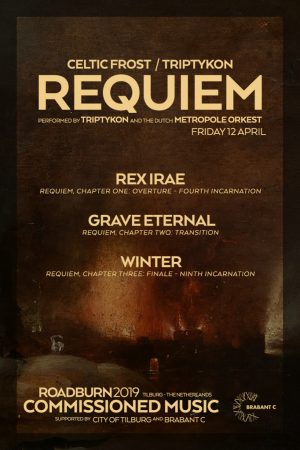 How important will the conductor be for you?
How important will the conductor be for you?
“Our conductor will focus on dynamics, most of all. The orchestra has an in-ear system and will play with a click track, or with the drums, so he doesn’t have to keep time. He needs to keep things balanced, including the band. If the guitar is too loud compared to the string section, he will address that.”
Do you have to feel a connection with the music you are playing?
“Sometimes, when we play with a DJ for example, I have to recreate the parts that originally were programmed in the computer. With the Requiem we are playing music that leaves room for personal interpretation. I have some freedom, which is great. I am a composer myself and I like it when I can put something to my own taste into my parts. You won’t hear me saying that there is music I don’t play, by the way. If you start excluding certain styles, you don’t have a life as a musician. You can’t think like that, if you want to play with the Metropole Orkest. It takes a different mindset, compared to playing in a classical orchestra. You must understand the way people write music, and where their ideas come from. Then you can have a constructive discussion about that. Which is nice.”
With the Metropole Orkest you have played with metal acts before…
“…but not like this, not a full concert. That’s the great thing about this orchestra, the variety in styles is so diverse. This month alone, I will be performing one night full of famous film soundtracks in the Ziggo Dome, then a project with saxophonist Donny McCaslin and then the Requiem at Roadburn. That is quite a stretch, musically. And it is always challenging to get acquainted with the music in just a few days, to be able to make it yours. It means you must figure out very early if some part will not work. Before you start rehearsing, you have to tackle any possible problem with the score that you may encounter. In this case I had no doubts, for I know that Florian is a dedicated and experienced arranger. It is different when someone from the band itself decides to do an orchestral arrangement. For they will probably ask themselves what to do with the timpani, you know? Let’s double all the bass notes! With Florian that won’t happen, he will create space on the page. And even with only a special section of the orchestra involved, the setting is heavy metal. Very interesting.”
The Celtic Frost/Triptykon Requiem will be performed on Friday 12 April, 15.45-16.45, 013 Main Stage. Check the Roadburn website for more information.
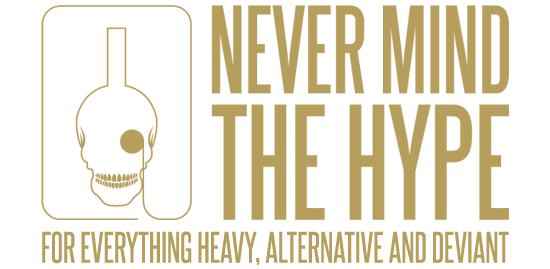
Nog geen reacties!
Er zijn nog geen reacties geplaatst.